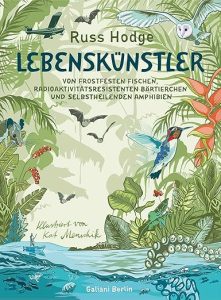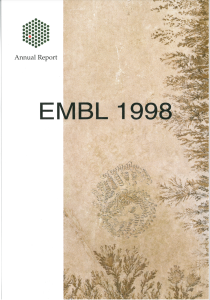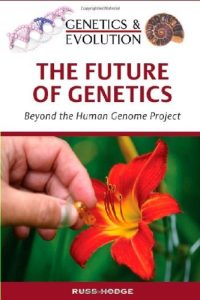In our special collection of EMBL alumni publications, the library is profiling works by Russ Hodge. His work has significantly contributed to popularizing both EMBL and the life sciences overall.
In October this year Russ’ latest book “Lebenskünstler” was released. The topic is unusual model organisms – 14 animals ranging from tardigrades to naked mole-rats, hummingbirds and giraffes – and the scientists who study them. (Hopefully an English version will appear in the coming year under the title Remarkable.)
We congratulate the author and hope to host a book reading in our library in the near future!
Here is a brief overview of our holdings, with the words of the author, reviewers and publishers.

Russ Hodge guides us on a tour of animals with extraordinary features and the scientists who study them, offering insights into human biology and nature’s response to climate change. Kat Menschik has captured each of these animal artists in beautiful images. The book was translated into German by Stefan Widdess.

Nine reports comprise hundreds of Russ’s articles that depict scientists and life in science at EMBL from 1997 to 2006. These volumes represent an extraordinary resource for information about EMBL and its staff. Stories about research are complemented by interviews, reflections, and portraits of researchers from all the EMBL sites.

This book tells the true story of a 30-year research project to discover the mechanism underlying a genetic condition combining brachydactyly and short stature with hypertension, now called Bilginturan’s syndrome. As the author describes, the book is based on interviews carried out with its major figures, including nearly all the scientists and many members of the family in Turkey, and visits to their village on the Black Sea.
“It is too easy to dismiss what is unusual – whether short fingers or a scarf on a woman’s head – as strange
and divisive, something to categorize people into “us” and
“them”. A deeper look reveals that such differences are to
be treasured, and if we are open to them, we can learn a
great deal about how to live together in a quickly changing world.”
From an Introduction to “The case of the short-fingered musketeer”, Russ Hodge, 2012

This six-book series traces the history of the main themes of the life sciences – from structural biology to genetics, development and evolution – up to the present day, with reflections on how they are likely to affect the future. The series includes the titles: Evolution, Developmental Biology, Genetic engineering, Human genetics, The Molecules of Life and The Future of Genetics.



